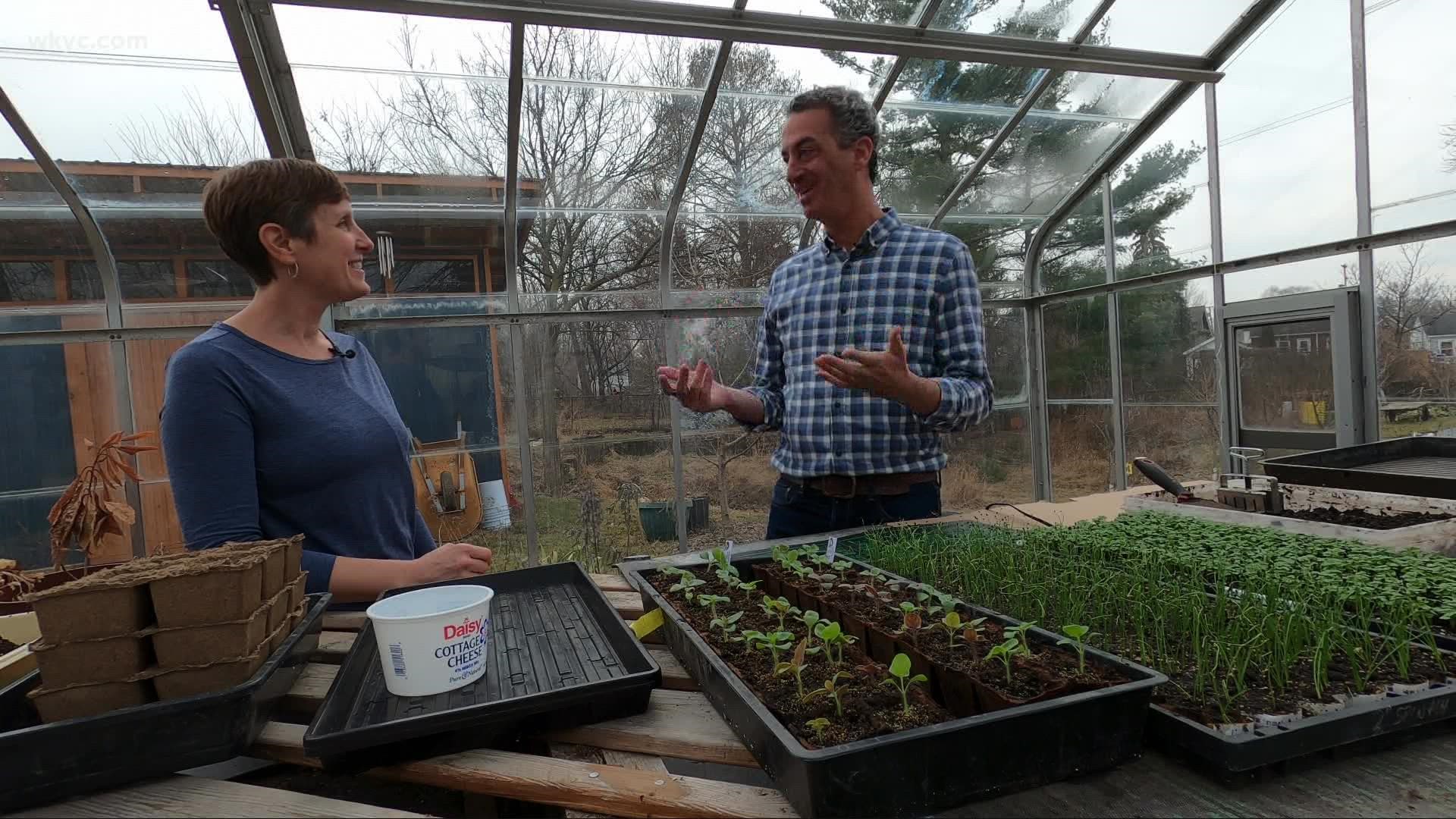CLEVELAND — The songbirds are singing, the daffodils are popping up, and the days are getting longer.
Spring is in the air, and along with that comes the desire to get started in the garden. While it's still too soon to plant those beloved tomato and pepper plants outdoors, it is time to consider indoor seed-starting and planting some early-season vegetables outside.
For guidance on the topic, we enlisted our friends at Bay Branch Farm, a remarkable urban farm in the heart of the city. Owners Eric and Annabel Khouri follow organic growing practices on their half-acre property to grow vegetables for sale to chefs and home cooks.
Despite the chilly outdoor temperatures, the climate is downright balmy in the greenhouse, where we chatted with Annabel about what seeds to start indoors versus outdoors. In addition to classic early season crops like peas and radishes — which are almost always planted outside — hardy greens are ready to be directly seeded in the ground as well.
"Spinach, lettuce, kale, Swiss chard — those are really good plants that do well early in the season," Annabel said.
Like any hobby, gardening requires some basic equipment to ensure success. To start seeds indoors, you'll want some good quality seed-starting mix, seed-starting containers, a germination mat, and sufficient light — either natural or artificial.
"These are called cow pots, which are made from cow manure and paper," Annabel told us. "We like this pot a lot because it adds nutrients to the plant."
Also, she adds, the whole pot can be transplanted straight into the garden, leaving less chance of disturbing the delicate roots.
For the growing medium in the pots, Bay Branch recommends avoiding the run-of-the-mill potting soil.
"You want to pick a nice soil medium from your garden center that's peat-based," Eric said.
Once the tomato and pepper seeds germinate and grow a little, they will be transplanted into progressively larger and larger containers. The process not only gives the roots more room to roam, but it also produces healthier plants.
"We move them into a 4 or 5-inch pots," Eric explained. "They'll actually be a stronger, healthier plant by transplanting them up."
When the time does come to put them in the ground outside, Eric recommends planting the tomatoes deep, demonstrating with a 2-foot plant.
"We'll plant that a foot into the ground," he said. "So just a foot sticking out, and you'll get more roots out of the ground into the stem."
For those who'd like a more hands-on look at the whole process, Bay Branch Farm offers a seed-starting class on Saturday, April 30. (Details here)
Of course, many home gardeners prefer to leave the whole seed-starting process to pros like Eric and Annabel. Each spring, Bay Branch Farm offers a plant sale, when plants like tomatoes, peppers, herbs, flowers, and other late-spring crops are offered for sale via their website. You can follow the farm's social media accounts to learn when the pre-sale goes live, because they always sell out.
Additionally, there are plenty of other local growers who offer plants for sale, including at most local farmers markets. Regardless of where you decide to shop, the Khouris say to resist the urge to buy and plant those tender heat-loving vegetables like tomatoes and peppers too soon, and ignore timeworn convention that says it's okay to plant after Mother's Day and wait until the weather really and truly warms up for good. Your plants will thank you in the form of bountiful harvests.
"We're aiming to sell our plant starts in late May or early June," Eric declared.

